Advertising has been around for centuries but has taken many different shapes and forms. Today, there are many different types of advertising available for businesses, including types of outdoor advertising.
What is Outdoor Advertising?
Business Encyclopedia defines outdoor advertising as advertising that reaches potential buyers when they are outside their homes. Outdoor advertising is sometimes referred to as out-of-home advertising.
How Prevalent is Outdoor Advertising?
Many successful companies have discovered that outdoor advertising is their most effective means of getting their brand known and generating traffic to their businesses. For example, Cracker Barrel spends almost half of its advertising dollars on outdoor advertising (you’ve probably seen one or two while exiting the freeway).
Why Invest in Outdoor Advertising?
The Outdoor Advertising Association of America shows studies that potential American consumers spend seventy percent of their time outside their homes. Thus, it makes sense to present advertising in this environment.
A Nielson study featured in Entrepreneur discovered that outdoor advertising is the most effective non-digital method of generating traffic to online sales.
Outdoor advertising has the greatest return on investment in any form of advertising. On average, each dollar invested in outdoor advertising sees an almost triple return on investment. This is more than TV and magazine ads combined.
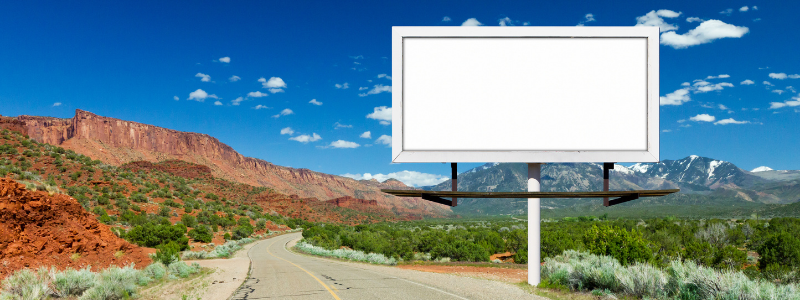
Types of Outdoor Advertising
When we think of out-of-home advertising, three that immediately come to mind are billboards, transit advertising, and street furniture. However, technological advances and creative advertising artists have invented several others.
-
Billboard Advertising
Billboards are the most common form of outdoor advertising. They come in various sizes. They range from static to digital, or mobile. Thanks to new technology, some of the newer ones use augmented reality. Some are interactive.
Billboards’ effectiveness in name recognition and buyer enticement is high. One disadvantage of billboards is that viewers who are walking or driving by them see them for only a few seconds. Thus, the message must be one potential buyer can grasp in that short time. Billboards provide no avenue for longer advertising copy.
With billboards—like real estate—their effectiveness depends on location. Billboards must be placed where traffic patterns and sightlines allow them to be seen by large numbers of passersby.
-
Transit or Vehicle Advertising
This type of out-of-home advertising includes signs and images on the interior and/or exterior walls of buses, railway cars, taxis, subway cars, and transit shelters.
The advantage is that these surfaces have a captive audience. However, people using public transit are often anxious about missing connections and reaching their destination on time. They are not in the best frame of mind to read advertising copy.
-
Street Furniture
Street furniture has the advantage of being relatively inexpensive. It is placed at eye level for foot traffic and can be very eye-catching. Because the traffic is mostly pedestrians and bikers, more advertising copy can appear on street furniture than on billboards or transit advertising.
Street furniture advertising may be static or digital. There are many opportunities including park benches, bus shelters, bike shares, urban panels, and metro lights.
Street furniture advertising can target the residents of specific neighborhoods, providing unique media opportunities to showcase local vendors.
-
Construction Advertising
Sides of buildings, fences, doors, windows present opportunities for advertisers similar to those offered by street furniture. Advertisers can target both pedestrians and drivers with their local and regional messages. Technology has increased the sophistication of these static and digital signboards.
-
Mobile Advertising
Millions of Americans now take handheld devices and smartphones wherever they go.
Mobile advertising includes advertising on mobile phones and other mobile devices. Mobile advertising can take place as text ads via SMS, or banner advertisements that appear embedded in a mobile web site.
Mobile advertising also makes use of social media like Facebook, Twitter, and Instagram to send brand recognition and special events messages to targeted audiences.
-
Augmented Reality
Augmented reality advertising creates an interactive experience of a real-world environment through computer-generated sensory stimulation. Augmented reality may be used to enhance several forms of outdoor advertising including billboards.
-
Static Advertising
Static advertising includes images or banners that target or retarget specific audiences. Because they are stationary or permanent, static advertising is easily maintained. They need to be assembled only once. So, they are relatively inexpensive in both time and labor. The effectiveness of static ads is easily monitored.
-
Interactive Advertising
Interactive advertising utilizes online or offline interactive media. Its aim is to communicate with consumers. Interactive ads promote products, advance brand recognition, inform would-be buyers about goods and services, or provide public announcements about special events.
-
Point of Sale Advertising
According to the Cambridge Business English Dictionary, point of sale advertising is also known as point of purchase advertising. It includes any advertising of goods or services at the location where they are sold. This would include ads outside storefronts, restaurants, fast food specials, store window displays, and chalkboard signs.
The advantage is that these advertisements of products, sales, or special events entice pedestrians into the establishment.
-
Retail Advertising
Retail advertising or retail marketing includes retailer store advertising both online and offline. The goal is to increase awareness and interest in products or services. Retail advertising is successful if it generates sales from a target audience. Through retail advertising, storeowners attempt to influence their audience into malls, shopping centers, stores.
-
User-Generated Advertising
With increasing technology, there is a rapidly growing trend toward user-generated content. This media content is generated by customers. It is disseminated in various social media forms including Facebook, Twitter, and YouTube.
Marketers interface with customers to encourage them to share the business, its services, and their positive experiences with the products. They may be enticed to provide reviews by offering discounts, opportunities to try new products, loyalty points, or other incentives.

How to Get Started
Outdoor advertising revenue has been steadily growing since 2009. In 2019, revenue from outdoor advertising amounted to over eight and a half-billion dollars in the United States.
If you have decided to pursue outdoor advertising campaigns, there are several things you need to consider.
- What types of out-of-home advertising will bring your products and services the best return on investment?
- What advertising copy or campaign will stand out from your competition?
- Given your objectives, what are prime locations for your outdoor ads?
- Having analyzed the competition, what is the best use of your advertising budget?
For information on these important questions, talk to experienced, proven outdoor advertising specialists like bMedia.
Using our expertise, you can create simple, powerful outdoor advertisements for your company.

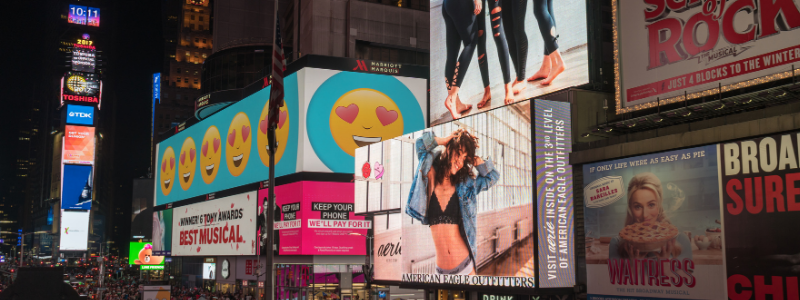


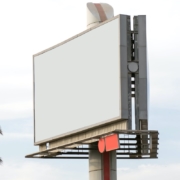

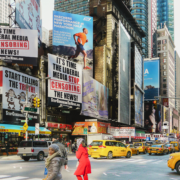
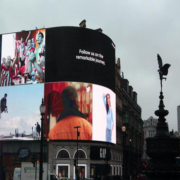

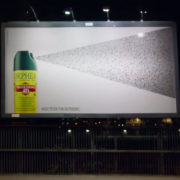

 787 792 4113
787 792 4113
